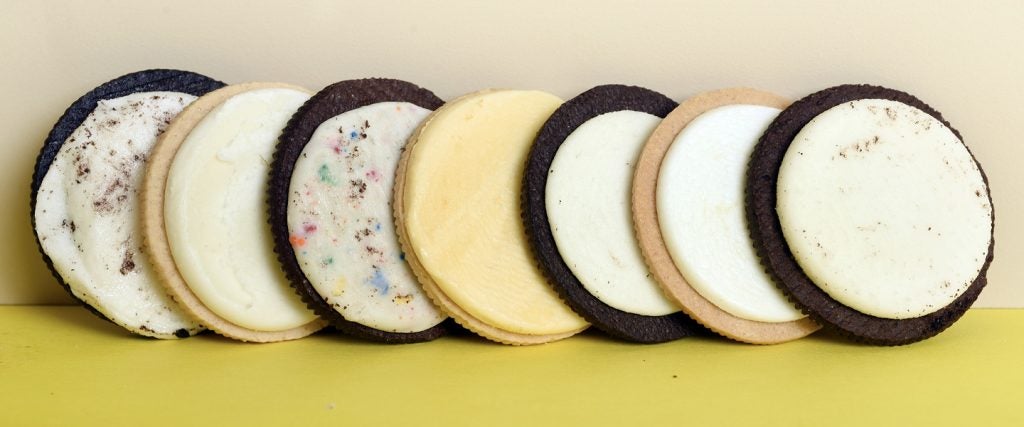If those of a bygone age ever pretended that the exterior chocolate-flavored wafers of an Oreo were the true stars of the world’s favorite cookie sandwich, that moment ended almost immediately after the Oreo debuted in 1912. By 1930, the name of the product had shifted from “Oreo Biscuit” to “Oreo Sandwich,” with an emphasis on the sweet creamy filling, and by 1940, the formal name of the cookie was the “Oreo Cream Sandwich.” Some of the advertisements even placed an embarrassing level of emphasis on the “cream sandwich” element, and most ads for Oreos labeled the cookies as “Oreo Creams” or “Oreo Cream Cookies” as the company entered their sixth decade in marketplace in 1970.
When evaluating a pack of traditional Oreos, it can be a chore to isolate the ingredients of the creamy filling from at least some of the components of the chocolate wafers. Fortunately, the mania evoked by Oreo’s creamy goodness has inspired the creation of several offshoot products that further emphasize the cream in a way that would make Randy Savage proud. In particular, the Handi-Snacks version of dunkable Oreos neatly separates the cookies from the cream in all aspects — the packaging, the labeling and on the list of ingredients. This will help us to see if the cream truly rises to the top, or more importantly, if it’s even cream by any rational measurement.
So what are the contents of the cream contained within Oreos?
The most prevalent ingredient in Oreo cream is unsurprisingly sugar, followed by either canola oil, palm oil or palm kernel oil. Titanium dioxide is added as an artificial color, and soy lecithin is the final ingredient. In other words, you’ve got a megadose of sugar blended with a ton of vegetable-based oils to act as the base of the cream. From there, the titanium dioxide food-whitening pigment is added, along with the soy lecithin emulsifier, which allows food items to blend together that otherwise wouldn’t.
One thing you’ve probably noticed: There’s no actual “cream” in this cream, nor is there anything that could be reasonably be expected to masquerade as cream.
What would you expect the cream to consist of?
Theoretically, you’d expect a sweet cream product to consist of three or four simple ingredients along the lines of sugar, condensed milk, heavy cream and vanilla extract, with something like lard added for the sake of thickening and consistency. Ironically, lard was present in Oreos until it was replaced by the vegetable oils in the 1990s.
Obviously, the environments the Oreo dwells in from creation to consumption requires its “cream” to serve the dual role as flavor contributor and long-term adhesive. This makes it critical that the white filling be as pasty as possibly, prioritizing stickiness over creaminess.
Are the actual ingredients of Oreo cream better or worse for you than what you would have expected?
No matter what a sweet, creamy, cement-like food substance is composed of, you can bet dollars to donuts that sugar and fat are going to predominate within the mixture. At those sorts of ratios, homemade salsa would become unhealthy if sugar overwhelmed the rest of the ingredients to such an extent. So if you’re eating Oreos, by all means enjoy them, but never delude yourself into thinking that creamy goo could be healthy no matter how you mix it together, or what you’re using it to paste together.

